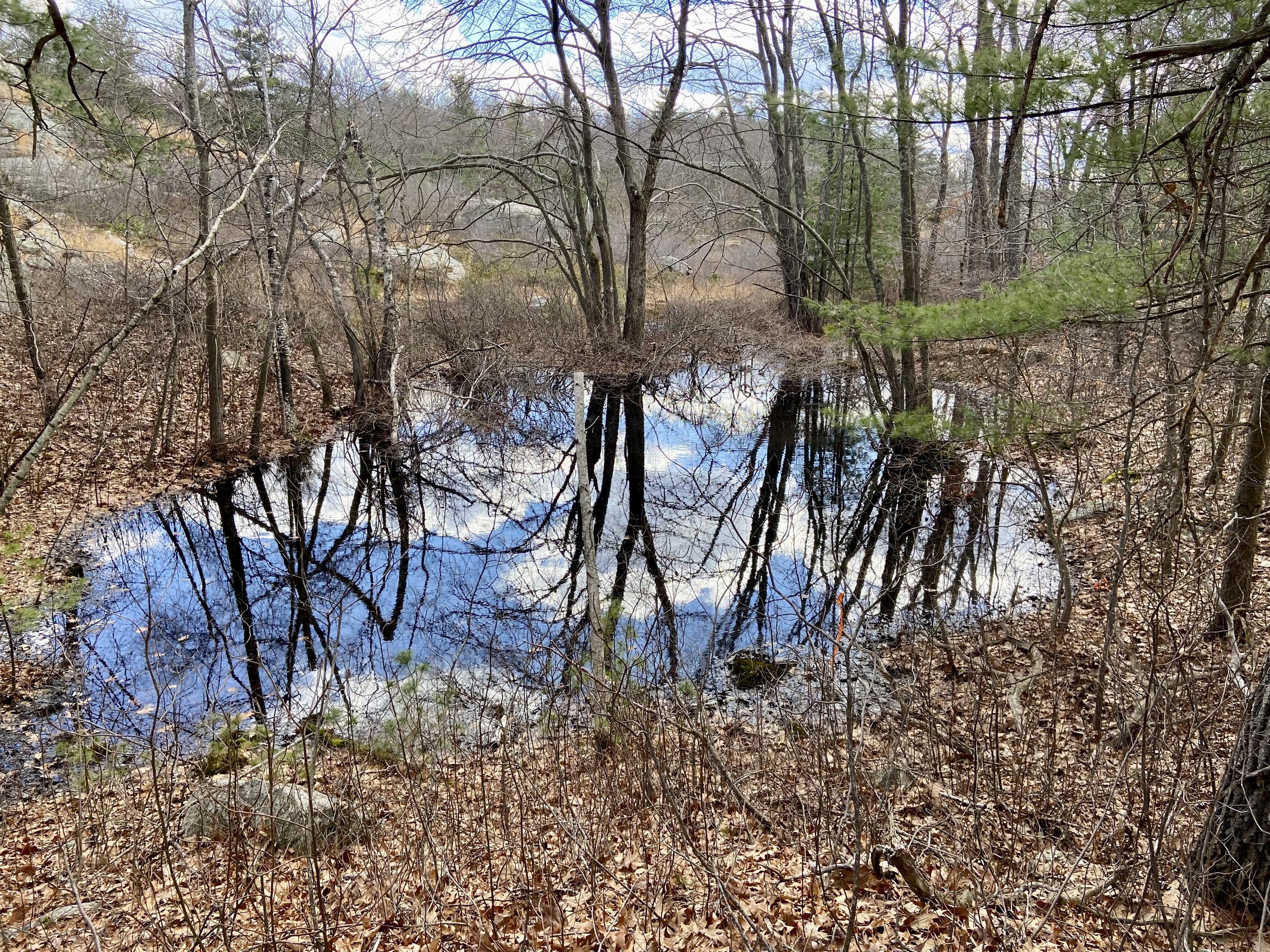Vernal Pools and Wetlands

The 28 acres include vernal pools, springs, intermittent streams and multiple large and small wetland areas. Three of the wetlands are Bordering Vegetated Wetlands (BVW), with 100 ft buffers marked by dashed green lines. The Wood Frogs and Spotted Salamander that breed in CVP #8328 live in the 12 acres of upland forest that would be clearcut and blasted to excavate the building footprint for the hilltop site.
A young American Toad rests on club moss at NEMT Forest, May 16, 2022
Trilling American Toads at Vernal Pool #3, Spring of 2022
Certified vernal pools should have additional protection if they are part of a vernal pool cluster.
Vernal Pool Clusters
The importance of protecting undisturbed upland habitat adjacent to and between vernal pools is widely recognized in scientific literature. Projects altering wetland resource areas can disrupt existing migration routes of amphibians and reptiles between vernal pools, or between vernal pool habitat and other wetlands or upland nesting areas. The wetland regulations limit jurisdiction to vernal pools and the 100-foot habitat zone around the vernal pool that is within a wetland resource area. Studies have documented, however, that areas beyond the 100-foot habitat zone are biologically important for breeding amphibians and other vernal-pool-using species. Studies demonstrate the importance of preserving habitat connectivity between pools to support viable populations of amphibians. Habitat surrounding vernal pools contribute to the maintenance of the vernal pool hydro period and the quality of the aquatic habitat to ensure successful breeding. Avoiding new stormwater impacts, remediating existing stormwater impacts to vernal pools, and preserving undisturbed habitat around clusters of vernal pools will foster the continued viability of these ecosystems. Knowing the location of vernal pools and vernal pool clusters in the community can help ensure that municipal land-use planning efforts incorporate appropriate stormwater management designs, consistent with TMDL requirements, that can best preserve, protect, and restore these essential ecosystems. The criteria used to define vernal pool clusters on MassDEP's maps include:
* The presence of two or more vernal pools (certified or mapped by NHESP);
* Good connectivity between pools with few obstacles to amphibian migration (i.e. roadways, buildings, etc.); and
* A requirement that the pools be within 400 meters of each other to protect migratory and dispersal distances for juvenile and adult pool breeding amphibians.



